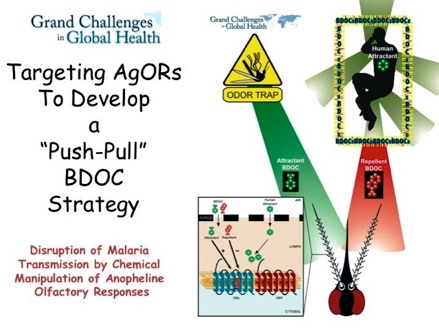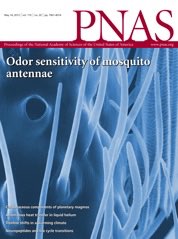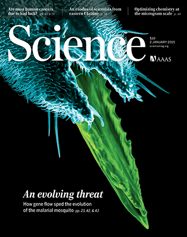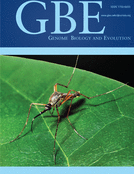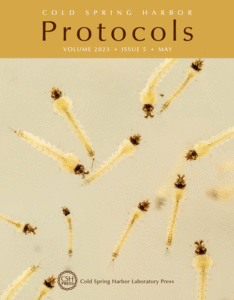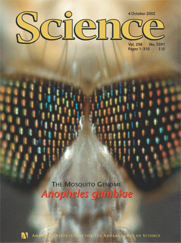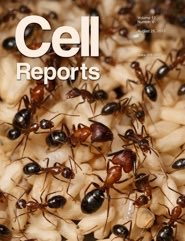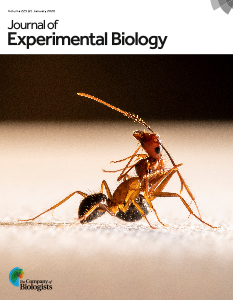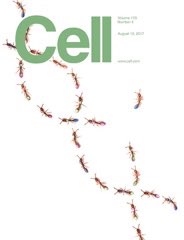Our Research
Mosquitoes are Vectors for Many Pathogens with Catastrophic Effects on Global Health

A major focus of the laboratory is the characterization of specific genes and their products that control important behavioral processes in the life cycle of insects which act as disease vectors. In this light we concentrate on host (i.e. blood-meal source) seeking/selection in the mosquito Anopheles gambiae (also a new species now known as An. coluzzii in honor of Mario Coluzzii the late, great malaria biologist) which is the principal vector for malaria in Africa. Malaria is caused by a protozoan parasite of the genus Plasmodium that is transmitted to humans through blood feeding by female Anopheline mosquitoes.
In this context, we are examining the molecular events of olfaction as this sense predominates the overall host preference and other essential behaviors in mosquitoes and other insects. This aspect of the mosquito’s behavior is especially important as it makes a significant contribution to the vectorial capacity of this arthropod vector, as well as playing a similar role in the overall impact of many other insects of economic importance.
We use molecular and informatics based approaches to identify genes that are active in olfactory signal transduction in An. coluzzii and other disease vector mosquitoes. The molecular characterization of genes which mediate olfaction in this Anopheline mosquito has started with the generation of cDNA libraries specifically derived from olfactory (i.e. the antennal and maxillary palps) and neural (heads that have been stripped of antennal and maxillary palps) structures of female adult mosquitoes. These hand-dissected structures have been used as substrate for the synthesis of subtracted cDNA libraries using novel PCR based methods that are specifically designed to facilitate the use of picogram amounts of mRNA starting material. More recently we have focused on genomics based approaches that include genome mining and deep sequencing of olfactory transcriptomes that has thus resulted in the isolation of several olfactory genes from An. coluzzii that are currently being characterized at the molecular and cellular levels.
Much of the lab’s focus is on the molecular, biochemical and functional characterization of ORs An. coluzzii (AcORs). Over the years “Team AgOR” has gone from the original characterization of AcORs insofar as their DNA sequence and organization to detailed in vivo expression studies. We have extended this study to include the use of ex vivo expression systems, electrophysiology, cell culture and transgenic insect systems (e.g.Drosophila) in order to study the functional characteristics of AcORs from specific senory appendages to whole genome wide approaches (see publication list).
A long-term objective of our work is the molecular characterization of the olfactory genes in general as well as the mechanisms that which are central in the marked preference for human blood meals (anthropophily) characteristic of An. coluzzii. In fact it is this component of the mosquito’s behavior which makes it such an important disease vector. In contrast, a preference for bovine blood meals (zoophily) has been observed in the non-vector sibling species An. quadriannulatus. By using subtractive hybridization it may be possible to prepare anthropophilic and zoophilic enriched cDNA pools from which a more defined pool of olfactory and other behavioral genes may be isolated. For the present, we are engaged in a suite of studies to isolate and characterize orthologous ORs from species of anthropophilic and zoophilic mosquitoes as well as from other mosquito vectors for other human pathogens. These include Aedes aegypti, the vector for dengue and yellow fever that is widespread in Central and South America and Culex pipens, the North American mosquito responsible for transmission of West Nile Virus.
On the applied side, from 2005-2015 we were privileged to participate in a broad international network of five laboratories (encompassing Yale University, New Haven, CT; Wageningen University, The Netherlands; ICIPE, Kenya; The MRC Laboratories, The Gambia) that has been selected for a Bill and Melinda Gates Foundation Grand Challenge In Global Health grant for the specific purpose to target odorant receptors in order to design a new generation of mosquito repellents and attractants. More recently, we continue to work together with colleagues at the Vanderbilt Institute for Chemical Biology in using state of the art molecular and chemical approaches that target AcOR/AaORs in order to design a new generation of mosquito repellents and attractants that would foster the design of novel programs that target chemosensory pathways and the behaviors they control in vector mosquitoes. These may also include behavioral disruption programs based on specific inhibitors (aka “confusants”) of OR-mediated olfactory pathways as well as the identification and intelligent design of novel and economically synthesized mosquito attractants and repellents. This approach could be extended to other mosquito vectors as well where reductions in host seeking (through the use of confusants or repellants) could potentially effect disease transmission by targeting adult vectorial capacity. Attractants may be incorporated into novel mosquito management strategies, these include: lures to increase the efficiency of traps for sentinel monitoring of vector populations and insecticide-laden mosquito trapping systems for population reduction; augmentation of insecticide-treated net (ITN)-based strategies as well as otherwise enabling innovative insect/disease control strategies that focus on disrupting and/or taking advantage of vector-host interactions.
Thus far this effort has resulted in the identification of several active ingredients (AIs) that attract and repel mosquitoes and other insects-and the awarding of patents for many of these. The most promising of these AIs belong to a novel class of molecules that directly target insect odorant receptors discovered here at Vanderbilt University-the Vanderbilt University Allosteric Agonists/Antagonists (VUAAs). Working together with academic and private sector colleagues, we are working to develop VUAA-based insect repellents for use against insects that act as agricultural/industrial pests and disease vectors.
We have recently extended our interests to the study the chemosensory elements of pheromone-based eusocial interactions in two divergent species (Camponotus floridanus and Harpegnathos saltator) of ants. This was initiated as part of a Collaborative Innovation Award from the Howard Hughes Medical Institute (HHMI) and is now supported by Vanderbilt University. In this context, we have extended our studies on chemosensory-driven behaviors of mosquitoes to eusocial ants to take advantage of the large body of work that suggests that behavior and social organization in ants are largely modulated by chemosensory communication, often encoded by complex mixtures of volatile cuticular hydrocarbons (CHCs). Ants are extremely interesting because they exhibit the sophisticated ability to discriminate and respond to a wealth of socially relevant chemical cues that are highly related in structure. The genetics and inherent circuitry that supports this capacity is likely to provide us with a rich reservoir of information regarding the evolution and caste and sex-specific modulation of chemosensory receptor space, as it applies specifically to social organization- an extremely intriguing question that is not applicable to vector mosquitoes.
